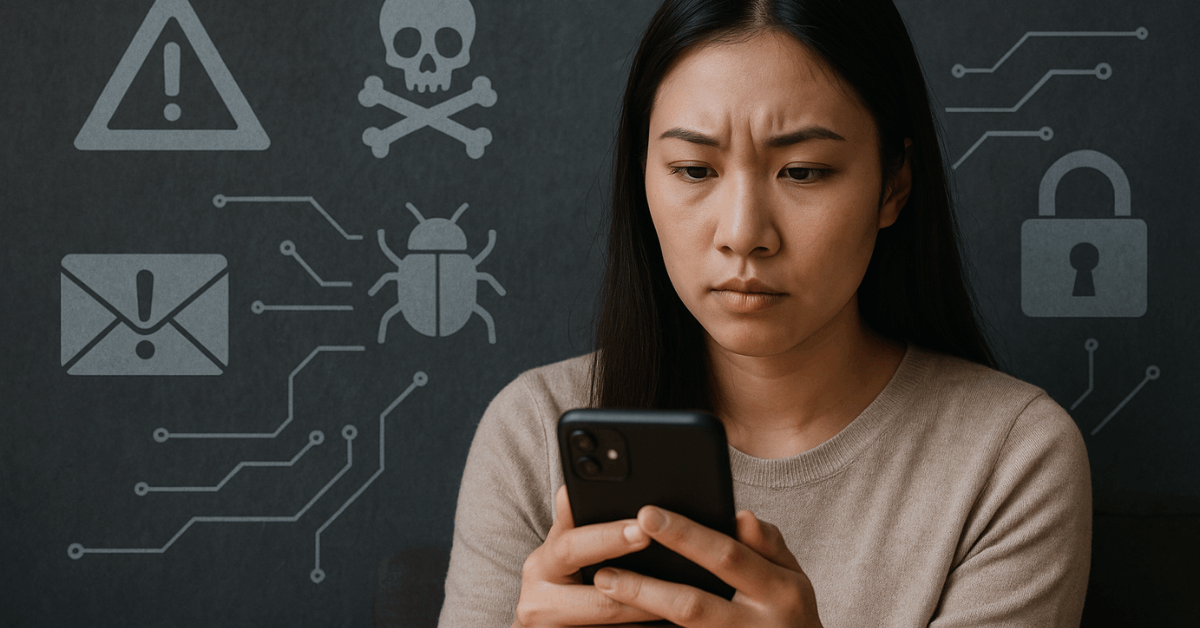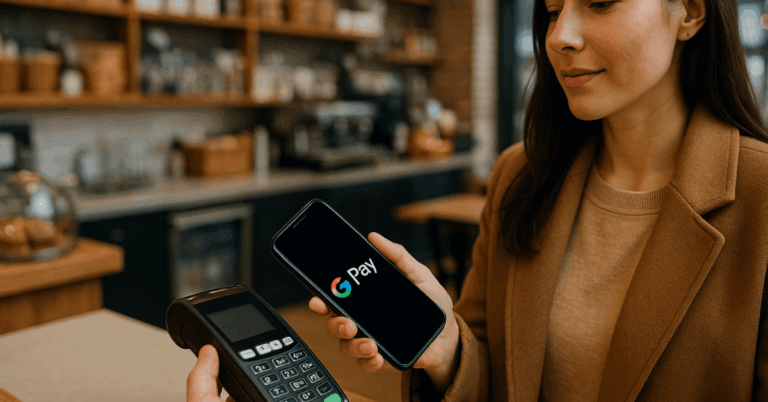Your smartphone holds your most private data — from financial details to personal conversations.
That makes it a frequent target for online attacks and fraudulent activity. Learning how to protect your phone is no longer optional; it’s a necessity.
This guide will help you secure your device, understand threats, and maintain your safety in the digital world.

Understanding Mobile Security Basics
Your phone’s security depends on how well you understand its risks. Recognizing what causes vulnerabilities helps you take proactive steps.
Common Types of Threats
Modern attacks come in different forms, and each one targets your data differently. Here are the most common types you should know:
- Phishing links and fake apps try to steal your login credentials.
- Data-stealing software collects your sensitive details without permission.
- Spyware hidden in free apps tracks your activity in the background.
- Unsecured Wi-Fi networks allow hackers to intercept your personal information.
How Your Phone Becomes Vulnerable?
Many users make simple mistakes that expose their devices. Using weak passwords or skipping software updates increases the chances of attack.
Risky downloads from unofficial sites also open your phone to threats. Even allowing unnecessary app permissions can lead to serious data leaks.
Use Built-in Security Features Wisely
Modern smartphones already have security tools you can activate within minutes. Using these features properly can protect your device from most threats.
Enable Biometric Authentication
Your fingerprint or face recognition adds a strong barrier to unauthorized access. Always combine biometrics with a secure PIN or password.
Avoid easy combinations like “1234” or birthdays. It’s best to change your passcodes regularly to stay secure.
Keep Your OS and Apps Updated
Updates are your first line of defense. Developers fix vulnerabilities and bugs through system patches.
Delaying updates allows attackers to exploit known weaknesses. Turn on automatic updates to ensure your device stays protected.
Activate Remote Lock and Find My Device
Losing a phone doesn’t mean losing your data. By enabling remote lock and location tools, you can erase information instantly if stolen.
Both iPhone and Android have this feature under account settings. It’s one of the most effective safety options available today.
Identify and Avoid Fake Apps
Fake apps are one of the fastest-growing risks today. Many look real but contain harmful code or data theft tools.
Check Developer Information
Always verify the app developer’s name before installing. Only use official app stores like Google Play or the Apple App Store.
Avoid APK downloads from random websites, which often include hidden files. Reviews and ratings can also help spot suspicious apps.
Review App Permissions
Too many permissions mean higher risk. Apps asking for contact or camera access without reason should be uninstalled.
You can review and disable permissions under your phone’s settings. This simple step reduces your chances of being tracked or spied on.
Secure Your Online Activities
What you do online directly affects your phone’s safety. Small behavior changes can make a major difference.
Use Secure Connections Only
Never enter passwords or banking details while using public Wi-Fi. Use your mobile network or a VPN to encrypt your data.
Always check that websites begin with “https” before entering any information. Secure connections prevent third parties from seeing what you send or receive.
Enable Two-Factor Authentication
Two-factor authentication (2FA) adds an extra step when logging in. Even if hackers get your password, they can’t access your account without the second code.
Most major apps and banks now offer this option. Use it on all accounts connected to your device.
Recognize Suspicious Messages and Links
Messages are still one of the top ways criminals reach users. Being able to spot suspicious behavior prevents scams before they succeed.
Signs of a Fraudulent Message
These details often reveal something’s not right:
- Urgent messages demanding quick action
- Emails or texts from unknown addresses
- Spelling or grammar errors
- Links leading to fake login pages pretending to be official sites
What to Do When You Receive One?
Never open attachments or click on unknown links. Delete and block the sender immediately.
Use your phone’s built-in spam report tools to flag the message. Reporting helps prevent similar attacks on others.
Install Reliable Security Apps
Security software provides ongoing protection in the background. It can detect and remove dangerous files before they cause harm.

Recommended Tools
Choose well-known apps like Avast Mobile Security, Bitdefender, or Kaspersky Mobile. These tools scan your system regularly and block suspicious downloads.
Always check reviews and permissions before installation. Avoid using two antivirus apps at once, as this can slow your phone.
Schedule Regular Scans
Set your security app to scan your device weekly. Delete flagged files immediately to maintain optimal performance.
Keep the app updated to detect newer threats. Regular scans are a simple yet powerful safety habit.
Back Up and Encrypt Your Data
Even strong protection can fail sometimes. Regular backups ensure you don’t lose important data during a breach.
Cloud vs. Local Backup
Cloud storage automatically saves your photos, messages, and files. Local backup, stored on a computer or external drive, offers more privacy if you prefer not to use online services.
Both methods are useful depending on your preference. Always encrypt backups to prevent unauthorized access.
Manage App Permissions and Settings
Apps often collect more information than needed. Controlling permissions helps minimize exposure.
Review App Access Regularly
Check your settings monthly to revoke permissions from unused apps. Turn off access for features like location or microphone when unnecessary.
Many devices now allow you to set “Ask Every Time” for sensitive data. The less access you grant, the safer your personal data remains.
Stay Informed About New Threats
Attackers constantly create new methods to bypass defenses. Keeping yourself updated helps you stay ahead.
Follow Trusted Tech Sources
Reliable websites such as TechRadar, CNET, and official security blogs release updates regularly.
Reading them once a month gives you awareness of new issues. Knowledge remains one of the best tools against scams and malware.
Learn from Security Incidents
Pay attention to news about data breaches or app recalls. Each case offers lessons about what to avoid.
Understanding how others got attacked can prevent the same mistake from happening to you.
Protect Financial and Personal Accounts
Phones often store access to your money and identity. Taking extra steps here prevents bigger losses.
Use Banking Apps Carefully
Always download your bank’s app from its official website or verified store link. Never log in from links sent through messages.
Close sessions after use and avoid using public Wi-Fi for transactions. These habits help protect your financial information.
Use Alerts for Transactions
Enable notifications for every debit, credit, or online payment. Instant alerts let you detect fraudulent activity in real time.
If you see anything unusual, contact your bank immediately. Monitoring activity is as important as prevention.
What to Do If You Suspect an Infection?
No system is perfect, and sometimes signs of infection appear. Acting fast limits the potential damage.
Immediate Steps
If you think your phone is compromised, follow these actions:
- Turn off Wi-Fi and mobile data immediately.
- Run a full device scan with your security app.
- Uninstall recently downloaded or suspicious apps.
- Change all passwords from another trusted device.
Contact Support
If problems persist, contact your mobile provider or bank. They can help secure your accounts or replace compromised SIM cards. You can also reach out to cybersecurity hotlines for further instructions.
Digital Hygiene Habits for Everyday Safety
Good digital habits are key to long-term protection. Repetition builds a strong safety routine.
Best Daily Practices
Keep these small but vital habits daily:
- Avoid downloading from unverified websites.
- Don’t save passwords inside your browser.
- Always read reviews before installing any app.
- Restart your phone regularly to refresh security processes.
Each of these actions reinforces your protection against ongoing threats.
Final Thoughts: Stay Smart and Stay Safe
Protecting your phone takes consistency, not just one-time actions. When you update your system, verify apps, and stay alert to suspicious messages, you make it harder for attackers to succeed.
Technology changes quickly, but awareness keeps you in control. Stay smart, stay informed, and your data will remain safe every day.












